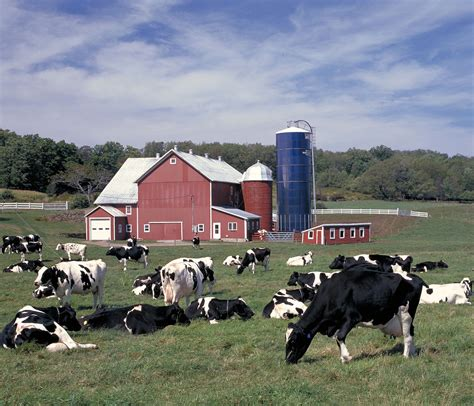Weaknesses in the food supply chain exposed by COVID-19

A New York dairy farm.
Food is often taken for granted in modern society where grocery stores overflow with an endless variety of products year-round. The US grocery industry is worth over $640 billion. There are over 40,000 retail food stores in the US alone. Supporting these thousands of stores is a complex logistical system that transports our food from farm to table, and COVID-19 has thrown a wrench into this system.
COVID-19 has caused problems throughout the supply chain. Food supply chains are complex and have many individual parts. The first step is always the farm itself. The farms are responsible for producing all of the crops and raw materials for food products. Depending on size, location, and other factors, food makes its way from the farm either directly to the consumer or goes through a processing or distribution facility, often both.
Some food items require more steps than others; for example, in order to make processed food like chips, candy, bread, butter, or any product that doesn’t grow on a tree, more steps are required to reach the consumer. In some cases, food goes almost directly to the consumer. A head of lettuce, for instance, might be sent straight to a distribution facility and then directly to a local grocer. In even rarer cases, food is sent directly to the consumer; the farmers market is a good example.
Farmers are also facing many challenges. Market prices for farm goods are plummeting with shrinking demand. Consumers have less money to spend on groceries, and restaurants are at limited capacity or closed. Out-of-home eating is a large portion of the market for key products like dairy.
The farmers themselves are at serious health risk as well. The average age for a farmer in the US is 58. A whopping eleven percent of farmers are older than 75. According to the CDC, the ages of 50-64 are 30 times more likely to die from COVID-19, and that number only rises with age.
Large processing facilities are also having problems. Earlier this year, Smithfield Foods shut down a large plant due to climbing COVID-19 cases among employees. This particular plant was responsible for almost five percent of the US supply of pork and employed 2,700 people. Large industrial plants, processors, and distributors are at significant risk because of the number of people required to operate in a given space.
Another large factor in the food supply chain is what comes before the farms. The farms need inputs like fuel, fertilizer, seeds, workers, and pharmaceuticals. With the manufacturing and distribution of the COVID-19 vaccine, large pharmaceutical companies will be forced to take their attention away from farm antibiotics. Almost all commercially raised animals are given antibiotics to prevent sickness. Meat and animal product shortages are a potential risk if antibiotics are in short supply.
While the US is experiencing an estimated eight billion meal shortage, it is important to keep in mind that the US imports about a fifth of its food supply, almost $137 billion in 2017. Food traveling from different countries is facing significant delays in shipping, and if these delays continue, there could be significant repercussions in the availability of some foods.
With all of the issues the US is facing with the food supply, one thing is evident: centralization and industrialization have made the food supply chain very susceptible to disease. In a post-COVID-19 world, food chains may be much different. Farmers may try to localize and sell more directly to the consumer. Farming methods may decrease the reliance on man-made inputs like fertilizers and pharmaceuticals. Distribution centers and processors might be greatly reduced in size and perhaps even eliminated. Although foreign and domestic trade is relied on for products that can’t be grown everywhere, there are still notable benefits of a localized food supply. Not only is a localized supply chain a way to reduce risks, but it also improves the food quality and ultimately the health of those who rely on it.
